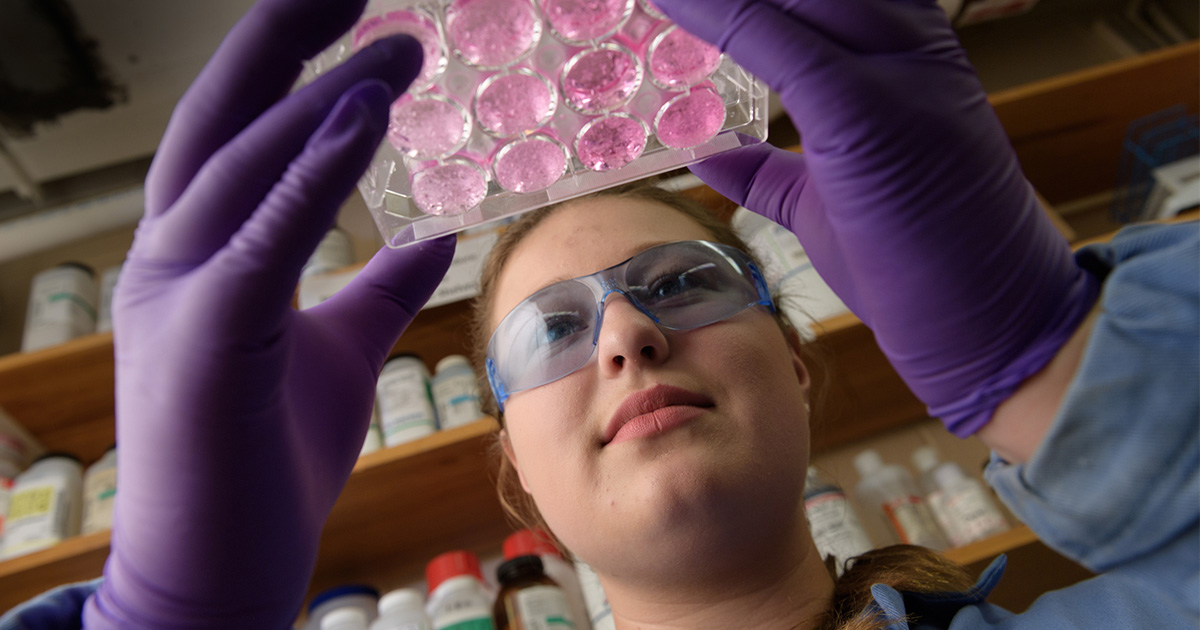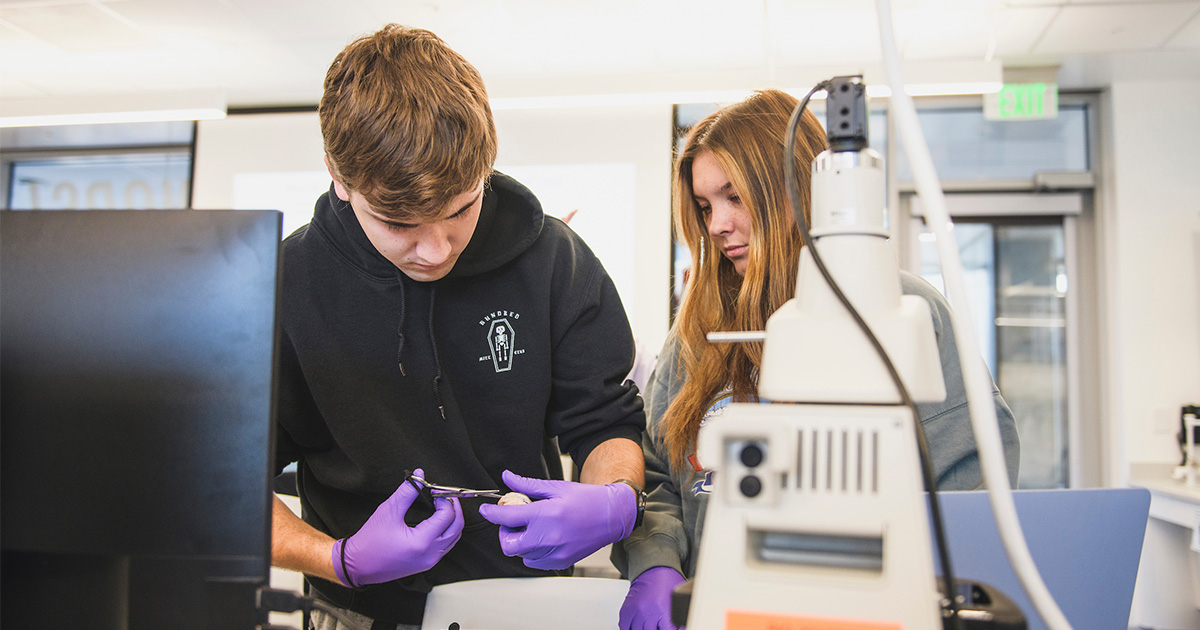Chemistry
Build a chemistry degree that fits your goals. Purdue’s flexible chemistry major lets you pair your interest in science with another field — like biology, business or psychology — so you can prepare for diverse career paths while gaining strong scientific and critical thinking skills.

Why Purdue?
Our students prepare for careers in a wide range of fields where critical thinking, curiosity and a deep understanding of science are highly valued including:
- Science policy analyst
- Pharmaceutical or clinical lab technician
- Forensic scientist
- Health care professional (with further education)
- Technical writer or science communicator
- Environmental consultant
- Product development specialist
You should pursue the most rigorous high school curriculum available to you. Succeeding in challenging courses will allow you to be a stronger candidate for Purdue’s competitive admission process and better prepare you for college success.
Minimum high school coursework (many applicants exceed these minimums):
- Math – 4 years
- English – 4 years
- Lab science – 3 years
- Social studies – 3 years
- World language – 2 years
Connect
College of Science
Discover your path in Purdue’s College of Science, where curiosity meets innovation across the physical, life, mathematical and computing sciences.
Contact
Director of Recruiting, College of Science
(765) 494-1990
sciencerecruiting@purdue.edu
Visit
Experience for yourself all that Purdue has to offer with opportunities to explore in-person or virtually.
Apply
Ready to take the next step? Apply to begin your journey at Purdue in chemistry.
Transfer to Chemistry
Purdue admits to individual majors. Transfer students must meet Purdue’s overall transfer criteria, as well as any major-specific requirements. Before you apply, check the closed programs page to confirm this major is open to transfer students. If it is, refer to the information below for major-specific transfer criteria.
- Minimum 2.5 GPA
- Additional Requirements: Completion of at least one semester of college-level calculus equivalent to MA 16100 or MA 16500 with a grade of C or higher.









